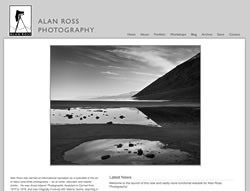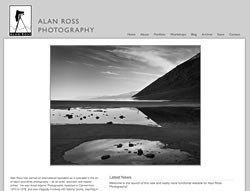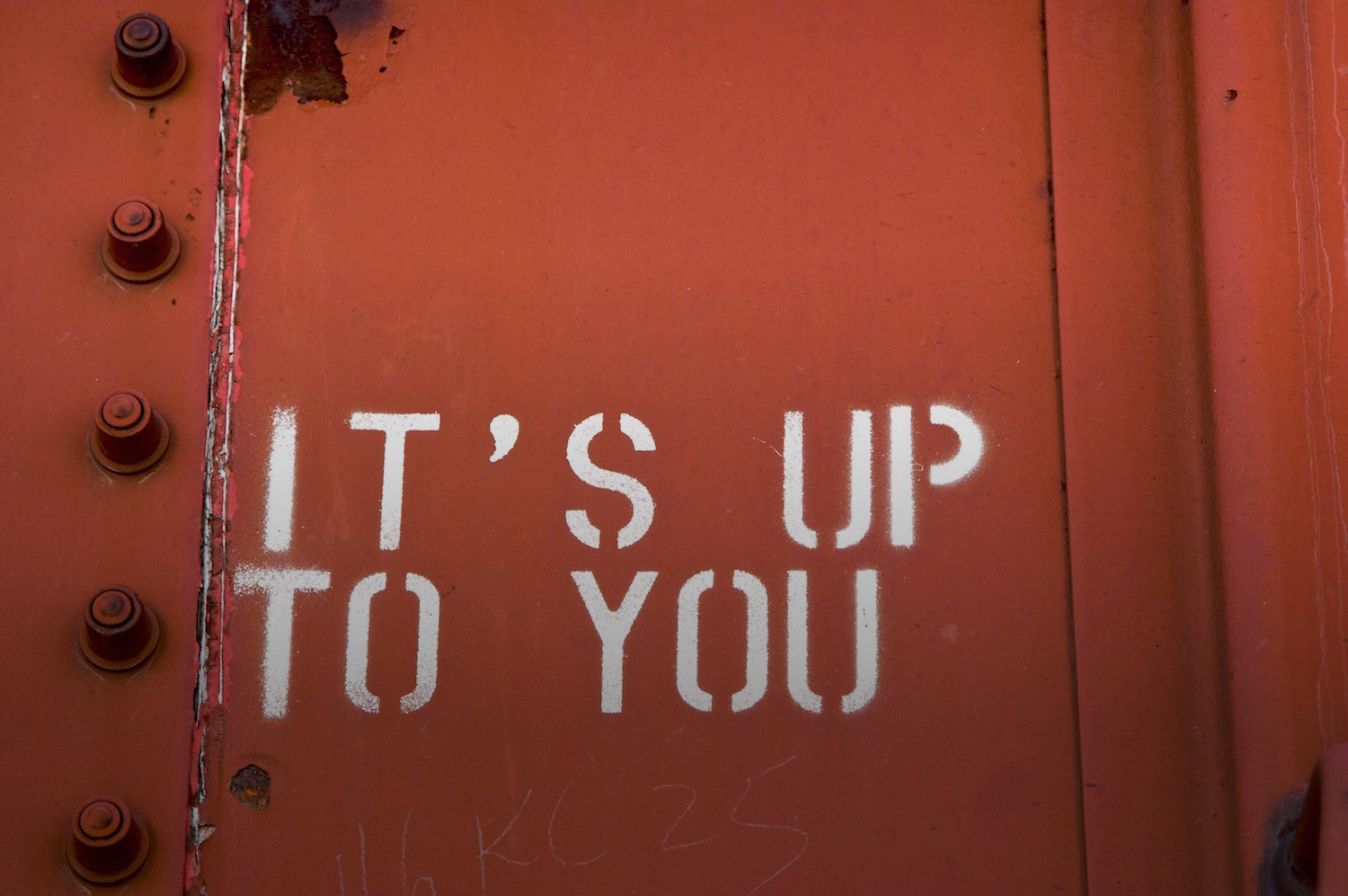Today’s iPhone shot.
Even though I shoot children’s portraits professionally, and take countless shots of my own daughter Fionnuala, it had been a while since I’d done a more formal shoot with her.
With Finn’s mother and grandparents pointing out that it was long overdue, we were out early into the Santa Fe morning in our neighbour’s garden (thanks, Loretta), to come up with the goods.
Fionnuala was telling me stories the whole time, so I just kept asking her questions and waited until she cracked herself up.
Integrating Photoshelter and WordPress — a quick guide
Integrating Photoshelter and WordPress — a quick guide
As a photographer and web designer, I’ve built my own photo sites and ones for other photographers, and I’ve always been frustrated, until I just combined Photoshelter with WordPress.
The problem is that photographers’ sites often need to combine both excellent photo handling and display, and also good handling of text-based pages.
Some photographers’ site solutions (especially Flash-based ones such as Evrium) don’t let you have more than the most basic amount of information about you — say 1 page of a bio, and 1 page of contact information.
But photographers might want to have a blog, details on the type of work they do, articles they’ve written . . . all kinds of stuff. This helps them differentiate themselves and do well in search engine listings.
But they also want great galleries, slideshows and if possible, the ability to sell prints or license their work right away.Here’s where the combination of Photoshelter and WordPress is a real winner — Photoshelter handles the images side brilliantly — from slick portfolios to full-on searchable and buyable archives — but it doesn’t do the text stuff so well — we’re back to the one About Page and a Contact form.
But a blogging tool like WordPress handles as much text-based content as you could throw at it. So it’s as easy to update the blog or other pages as it is to update the images. And with Photoshelter’s customization options, that’s what you can do.
Here’s my experience of the process, based on the work I’ve done on my own site (this one): http:/www.clearingthevision.com/ . It’s still a work in progress, but I’ll outline how I did it, in case it’ll help other people.
I should repeat here that I’m a web developer by trade, so while this wasn’t a fiendishly difficult project for me, I’ve spent years creating custom WordPress-powered sites and generally messing with CSS and HTML, so YMMV.
1) Basic Approach
I had a WordPress installation on my own server (at www.mysite.com), and used the CNAME functionality to rename my Standard Photoshelter account (you’ll need a Standard or Pro account to give the customization features) to archive.mysite.com.
I then also chose all the settings and layout options I wanted using the admin panels for the Photoshelter theme I was going to base the site on (Induro — the lighter background option). This meant that when I need to mess with the templates, the layout and setting were at least what I wanted for the gallery and other photo-related options.
Then I tweaked one of the Photoshelter Themes (Induro) to be the basic template for both the WordPress and Photoshelter sides of the site. I adjusted the header code on the Photoshelter so the navigation options were consistent across both sides.
2) Handling style sheets
Skinning WordPress to look like the Photoshelter theme and working out where the the style sheets should reside are the two big issues. I copied the source of the pages and the css files from Photoshelter side and used them as the basis for my WordPress design.
I built 2 sample pages locally in Dreamweaver — the site’s homepage, and a basic 2-column subpage design that would work for the blog and the more static pages.
Then I backed those designs into my WordPress install — essentially slicing the header, footer and sidebar up into different .php files, and creating unique templates for the homepage, basic text page, single blog post page, and the first page in the blog section.
When I was done, my new style sheet (containing all the photoshelter code, plus some extra styles just for WordPress) resided in my WordPress install.
It would be great if the only thing you had to change on the Photoshelter side were the main navigation options (and uploading your own logo). However, the Induro theme I liked didn’t have room for all the navigation options I wanted — it butted them up against the logo. (The theme also uses unnecessary tables, which is pretty old-school — it would easily be possible to rewrite the HTML using just CSS for almost all the layout)
So I had to redesign that a little, which meant I had to use the updated styles in my WordPress install for the Photoshelter pages too. This also meant copying the page background image (in my case, the gray to white gradient) over to the images folder on my site.
I also had to copy some of the other smaller images over — ones for Next and Previous arrows, for example.
3) Result
I now have a consistent look and feel for my whole site. Static pages (like the About information) are run as Pages in WordPress, so I can assign parents and sibling relationships if I want more than one page in a section (like the About section, where I have a subpage for my gear). The blog is a straight WordPress blog under the hood, so keeping that updated is very straightforward.
The site homepage is a Page in WordPress with its own template, with the Photoshelter slideshow and the most recent blog posts displayed (and some less frequently-changed information). This means I can update that slideshow very quickly in Photoshelter, and the changes will be reflected on my site homepage, and the names of any new blog posts will be shown here too, keeping the front page fresh.
4) Suggestions for Photoshelter
In addition to removing as many tables as possible from the Photoshelter themes, it would a great help to customizers like myself if the themes had a navigation bar that could run the full width of the page by default (some of them may — I didn’t check all of them before I started).
Since you’re likely to be adding new links (in my case, to my blog, a home link, a contact page and a page on my Aperture consulting), the room to run more nav options across an existing design would mean minimal adjustments to the Photoshelter side of the house.
Copyright issues — I took the Induro template wholesale, and applied it to my WordPress blog, making some adjustments along the way. I’m not technically sure this is what the Photoshelter folks had in mind with their templates, but it’s easier to make the rest of your site look like a PS template than it is to make the PS side of things look like the rest of your site. I hope they’re fine with it, but a note in the customization help to let us know if that’s OK might put some minds at rest.
5) Conclusions
You need to be pretty comfortable messing around with the inside of WordPress templates, but it took me perhaps around six hours to do the first major work involved in merging my Photoshelter site with my WordPress site.
(I already had a custom WordPress install that was set up the way I wanted it — if you were starting from a default template, or wanted to make more substantial changes to the PS themes, it could easily take as long again or more).
Even though I’m not completely finished yet, I’m really happy with the result. It’s scalable, so I can keep adding photographs and blog postings to my heart’s content and the twin systems should cope.
Drop me a line if you have any questions, if you’re planning something similar and I’ll try to help you out.
Of course, if you’d like me to do the heavy lifting for you with a project like this, I’d also be happy to talk to you.
By David Moore on August 15, 2009.
Exported from Medium on October 17, 2020.
 I’ve just launched a new site for Santa Fe-based landscape photographer, master printer and teacher Alan Ross.
I’ve just launched a new site for Santa Fe-based landscape photographer, master printer and teacher Alan Ross.
Alan was looking for a site to showcase his great work, his workshops and his tech-related blog. He explains, ” I had very little ability to make updates and changes to my old site, and besides needing a new look, I desperately needed a site that I could manage almost entirely by myself, with no working knowledge of code and HTML, and no special, expensive software.”
Enter WordPress and Photoshelter. We chose the Crisp Photoshelter theme as the basis for the design, but tweaked a number of elements to create the templates that would work across both the text (WordPress-driven) and image-heavy (Photoshelter-driven) parts of the site.
First up was adjusting the navigation to include all the sections that Alan wanted – Workshops, Shop and Blog, as well as the usual About and Contact info.
2009 Folk Art Market photos
Still trying to catch up with myself and lots of client web work, but I finally got time to sort and process the photos I took at the Santa Fe International Folk Art Market recently.
I built and maintain their website, and I also donated a bunch of my photos from last year, which got some good use, so I was up the hill again this year.
Here’s a slideshow of some of the pictures I took:
 I’ve just launched a new site for Santa Fe-based landscape photographer, master printer and teacher Alan Ross.
I’ve just launched a new site for Santa Fe-based landscape photographer, master printer and teacher Alan Ross.
Alan was looking for a site to showcase his great work, his workshops and his tech-related blog. He explains, ” I had very little ability to make updates and changes to my old site, and besides needing a new look, I desperately needed a site that I could manage almost entirely by myself, with no working knowledge of code and HTML, and no special, expensive software.”
Enter WordPress and Photoshelter. We chose the Crisp Photoshelter theme as the basis for the design, but tweaked a number of elements to create the templates that would work across both the text (WordPress-driven) and image-heavy (Photoshelter-driven) parts of the site.
First up was adjusting the navigation to include all the sections that Alan wanted — Workshops, Shop and Blog, as well as the usual About and Contact info.Then we darkened the overall background (which meant changing the shadow around the main content area), added a grey background to the thumbnails and single image display, and created a dark border to set off the gorgeous black and white images. Subtle tweaks, but ones I think work well.
 Alan’s Portfolio is set up as one Collection, so he can continue to add as many galleries to it as he needs to. The searchable Archive is another Collection.
Alan’s Portfolio is set up as one Collection, so he can continue to add as many galleries to it as he needs to. The searchable Archive is another Collection.
The Blog is set up as a WordPress blog, with the other sections of the site created as WordPress pages. So Alan can easily update both the text and images, while the whole site looks like one clean, consistent whole.
And he’s happy with the result: “David Moore listened to and heard my website needs, was responsive to my questions, and was all-around a complete pleasure to work with.”
Alan’s site: www.alanrossphotography.com.
The Santa Fe International Folk Art Market is this weekend, and the New Mexican newspaper have just published their regular supplement for the Market.
And I’m pleased to say they used a bunch of my photographs, including 6 on this spread (I greyed out the ones that aren’t mine).
Santa Fe is a town with a lot of grandparents. Folks move here when they retire, and children who grew up here often have to move away to find work.
So it was no surprise when I got a baby portrait session booking from a grandmother for when her daughter was in town for a visit with the new grandson, nine-month-old Joseph.
 Building websites for photographers – sounds easy, right? You just throw a bunch of photographs up, add some contact details, make it look cool, and Bob’s your uncle.
Building websites for photographers – sounds easy, right? You just throw a bunch of photographs up, add some contact details, make it look cool, and Bob’s your uncle.
Especially when there are services like LiveBooks, APhotoFolio, and software like Evrium’s Fluid Gallery to help. There are even plug-ins for WordPress that promise to knock out a gallery site in no time. And sites like Photoshelter or Smugmug will even handle print sales for you.
The problem is, as Juan Pons so accurately pointed out in his good post recently, that none of the options right now offer all the functionality photographers need to display, market, manage and sell their images effectively. Especially in an arena where search engine optimization and social media are so important.
I’m going to look at the current state of play with Photoshelter, as it’s the service I’m most familiar with, and which seems to me to offer the best framework for building a fully comprehensive photographer’s site. I’ll also make suggestions for how it could improve further.

The idea that ‘information wants to be free’ is the driving force behind so much content delivery on the Internet. It sounds good, right — progressive and egalitarian? But it’s a tenet that’s bankrupting newspapers, impoverishing photographers and redrawing the media map. And if we don’t start paying for online content soon, we’ll all be the poorer.
My first job in the Internet industry was in 1995, when I went to work for fledgling web consultancy Nua. Gerry McGovern (or ‘guru Gerry’ as we called him not quite to his face), had this weird idea about ‘making free information pay’.
We created a bunch of free email newsletters about web stuff, and became very successful as a result. But for us, successful meant getting paying web development jobs.
This approach is still valid and valuable — you spend time blogging, tweeting and the rest to show how much you know, connect with people and (hopefully) get some paying gigs out of it. Professional content creators — individuals and organisations — can and should do some of this, too.
One traditional way to fund this give-away is by advertising, but since that’s never really balanced the books online, we need another plan. Which is why I unfashionably pay for content. I’ve worked as a journalist (freelancing for the Irish Times, Salon.com, New Mexcio magazine and other publications), I’ve written a book (published by the Irish division of major UK publishing house Hodder Headline), and I’ve had photographs used by local and national publications and organisations.
Quality Costs
I know about being paid for producing creative works. But I’ve also worked in the Internet industry for 15 years, know my way around BitTorrent and read the New York Times online for free every morning.
So I can see it from both sides, but the crucial point is this: it’s hard and expensive to produce high-quality work. It takes the talent, experience, resources and time of a large team to get a book published or a magazine issue produced. Think of a book that hangs together across 80,000 words, with not a single typo or unnecessary sentence — every word pored over by people who do this stuff for a living.
You could go to blurb.com and run one off yourself — and that’s cool — but when you buy a book, it’s not really the paper and binding you’re paying for — it’s the skill of the people who made the countless number of decisions that made it turn out so well.
Same with newspapers — getting the things printed and distributed every morning is a tough job, but not half as hard as having skilled people spend all day chasing leads, asking tough questions, editing flabby copy and checking facts.
There’s an argument that citizen journalists will rise up to fill the gaps left by the dying newspapers, and there are some areas where I could see that work — experts writing about topics they know intimately that don’t involve lots of daily legwork (or being shot at in war zones). But creating good journalism takes people who know what they’re doing and are paid for their time spent doing it. And it looks like we need a new plan for where that money’s going to come from.
A magazine doesn’t need to be between two glossy covers to be worth reading, and online delivery creates a new medium with new challenges and opportunities. But the question the publishing industry as a whole is struggling with is how the hell are we going to make enough money to keep doing this? I don’t know how the new business models will work — Jason Pontin has some ideas more concrete than the usual ‘the sky is falling’ analysis here — but I do know I’m happy to pay for people to do this stuff for me in one way or another.
Aggregating is not creating
The argument that Google somehow renders newspapers obsolete confuses me. Aggregating news and deciding on priorities based on algorithms is interesting and liberating, but there a couple of points here. One is that part of what I’m happy to pay for is for editors who know a lot more than I do to decide what’s important for me to know about. It’s subjective, sure — the UK model of many national newspapers with their biases known and trumpeted sounds fine to me — but it’s better than a simple popularity contest. What’s important or interesting (in absolute terms or just to me) is seldom what’s the most popular.
The other point here is that Google wouldn’t have much to aggregate if there weren’t news gatherers and creators all over the world putting stuff online. Google has many creative people, but not many hardened journalists and photographers.
So recently I’ve started subscribing to more print publications — Vanity Fair, The Atlantic, The Week, Wired, Macworld, Photo District News — and keeping up my online subscription to Salon. If I could pay for the New York Times online (and the BBC iPlayer shows I’m watching) I would.
I’m getting a subscription not because I think the print versions of these publications are the only way they can and should make money, but because it’s the best we have right now. I want these publications still to be around when we figure out how to pay for all this online in a way that works for people.
The Cable TV Model
The Kindle’s online subscription online (which includes print publications and interestingly, paying for blog feeds too) suggests one way forward. In these cases (and with buying books on the Kindle too), you’re more directly paying for the creative work, not the final physical production costs.
People have got very comfortable with this model for music downloads — you knew you were always paying for the songs, not the CD anyway, and so moving to mp3s doesn’t seem so weird.
As yet there’s no iTunes Store-style infrastructure to allow this to happen for print media — you shouldn’t have to pay the New York Times using one payment system and the Irish Times using another. And it seems to me that micropayments per article doesn’t make as much sense as a subscription model.
Having to pay for everything individually (however small the fee) will remind me that I’m paying for it, and discourage use. The Netflix on demand subscription approach seems better, following the cable TV subscriptions we’re all used to in the US. Pay a monthly fee to some large amount of access tailored to you (I don’t want Homes and Gardens, but I might want the Utne Reader), and let me read what I want.
And offer me channels of related content based on topic not just provider — so I can read everything about the elections in Iran, from any of the sources I’ve subscribed to. If I could also see related content from places I’ve not subscribed to yet, that would help me find other sources I like (and might be willing to pay for).
This sounds a bit like an RSS reader on steroids — something that could handle the monetary side as well as the delivery of text, images, video, audio and the interactive elements that would make it easy to comment, twitter, blog and refer others to the material.
But until that (or something like it) comes along, I’m going to give the publications money for their print versions. An economic stimulus package of my own.


